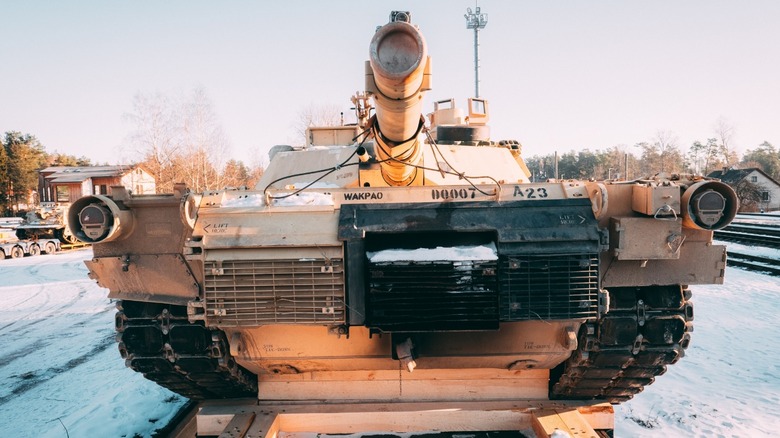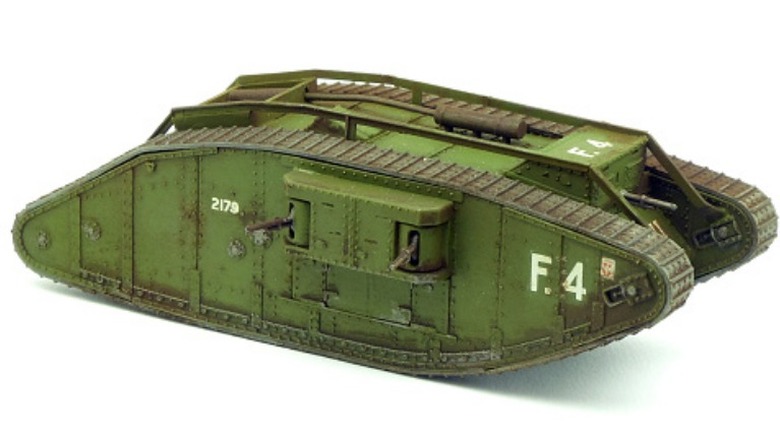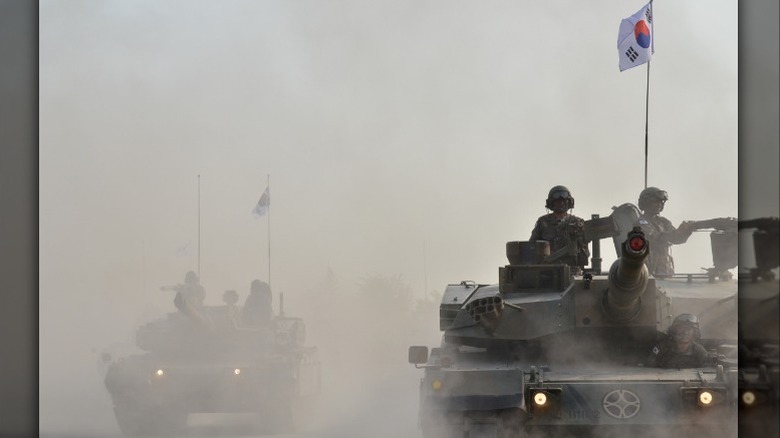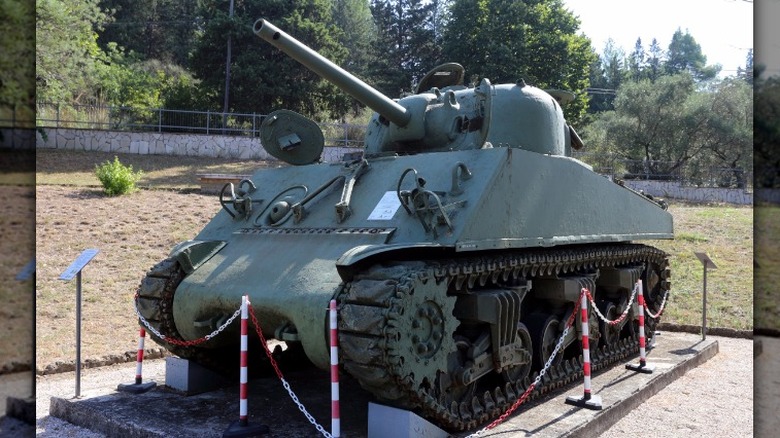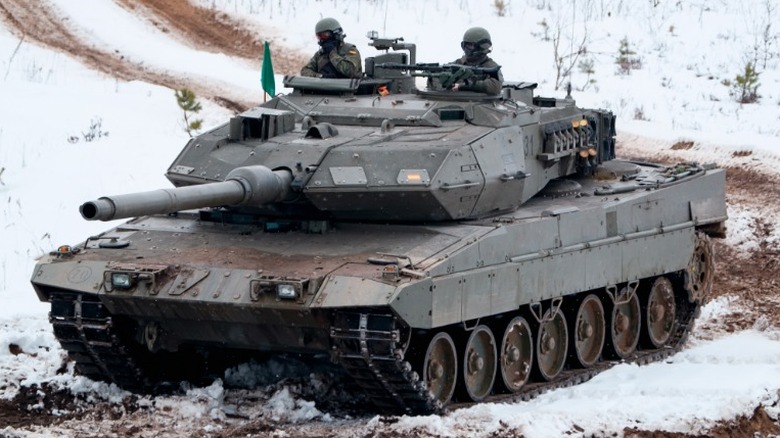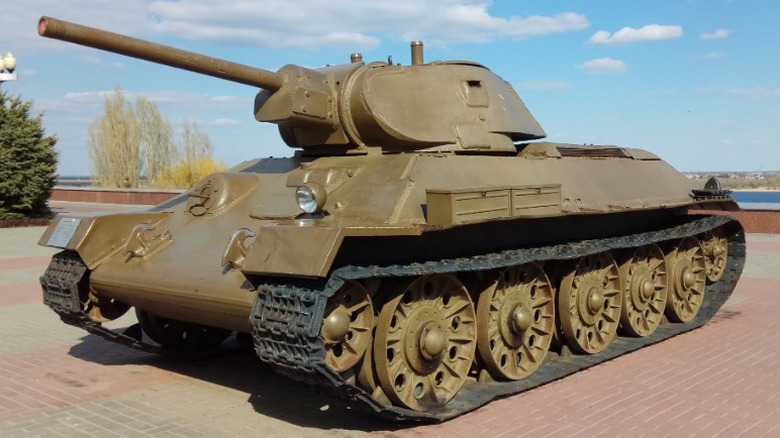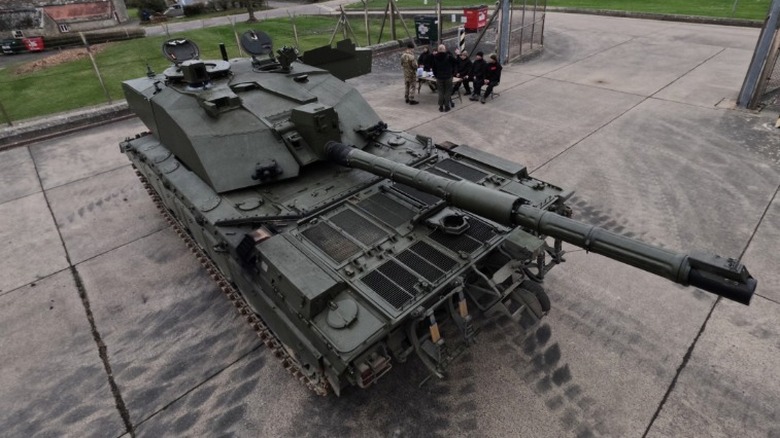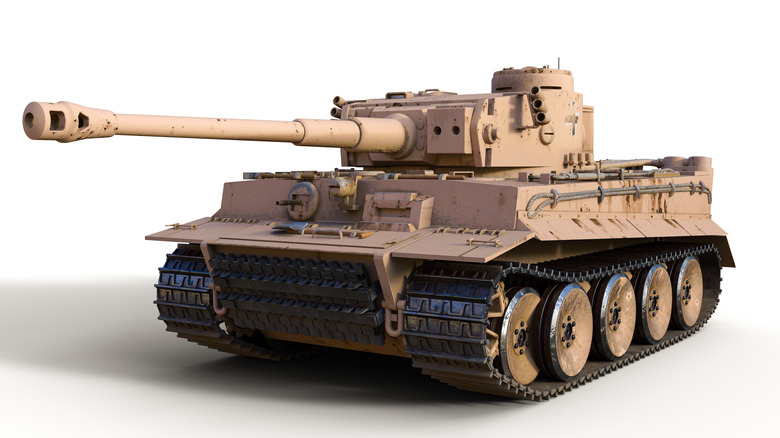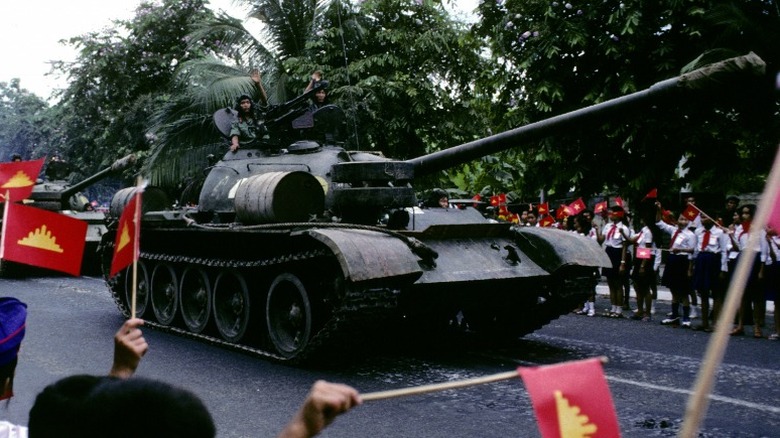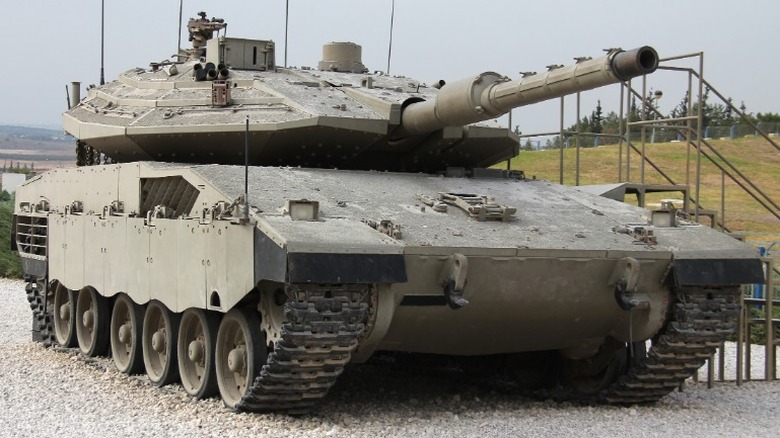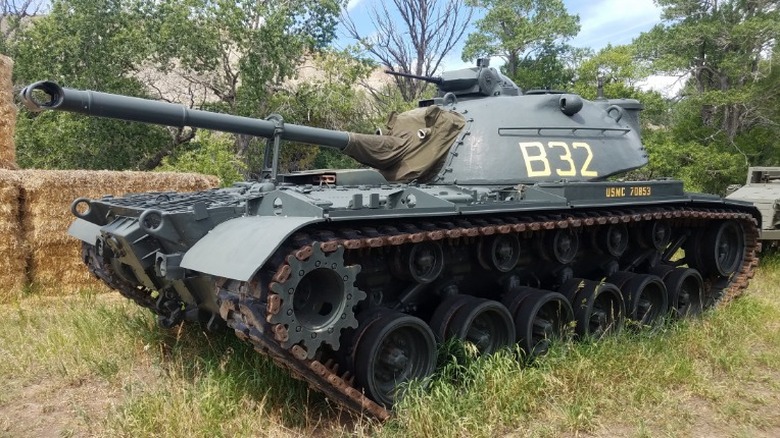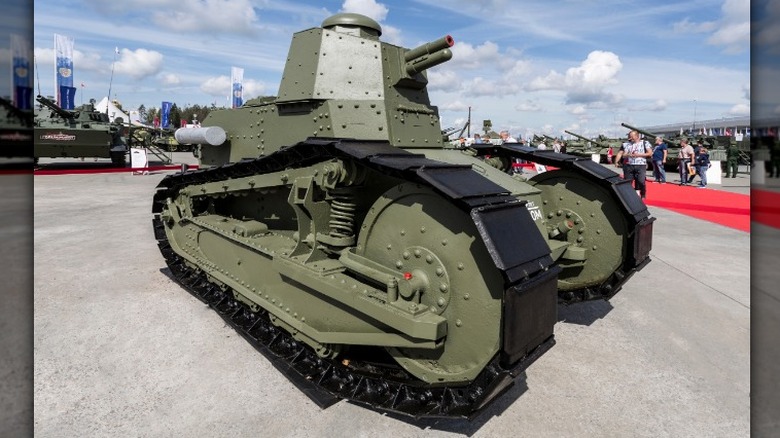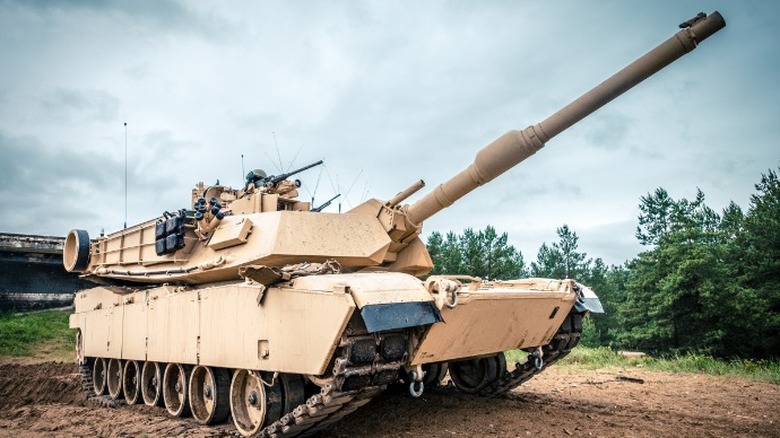12 Most Impressive Tanks Of All Time
The modern tank is a fearsome weapon of war — a highly sophisticated piece of military hardware equipped with a range of high-tech equipment related to its armament, protection, and propulsion systems, of which many details remain classified. Despite the continued advancement of other weapons systems and emerging novel configurations of weapons, tanks remain relevant as a formidable defense force. Even with the rise of drones and AI in military weaponry, the tank is still a crucial part of territorial defense.
The high-tech tanks currently fielded by armies around the world have a history stretching back to WWI when the British first introduced a heavily armored self-powered machine meant to overcome the trenches of enemy positions in the battlefields of Eastern France and Belgium. The first ones were crude by today's standards, but they helped the Allies achieve victory and were quickly adopted by militaries around the world. Tanks have since been involved in skirmishes, conflicts, and full-frontal assaults in military operations happening in dozens of countries worldwide, and future geopolitical tensions foretell the role of the tank to continue indefinitely. After more than a century of tank development, these are the 12 most impressive.
MK IV - Britain
By the time World War I was in full swing, the nature of warfare had drastically changed from the preceding decades. The invention of the internal combustion engine and automobiles led to mechanized warfare, which led to increasingly devastatingly lethal weapons development. As a system of trenches on the front lines brought on a stagnant war of attrition, military commanders sought ways to break through the lines to overcome the enemy. It would be the British who first engineered such a machine, and the first one to be mass-produced and deployed became known as the MK IV.
Adding armor to automobiles led engineers to develop vehicles that could get through the trenches and push the Central powers back. It was the MK IV that was manufactured in substantial numbers and deployed to the field. These new "landships" were called tanks to make it appear as though the army was transporting water tanks to the front. It was armed with four machine guns and two six-pounder cannons inside an armored shell with long tracks around both edges of the vehicle. The long and tall tracks made it possible to traverse an open trench. It was slow and cramped, with poor visibility and the centrally placed engine often filled it with carbon monoxide, making being inside sometimes more lethal than being outside. However, it helped the Allies to overcome the enemy and end the war.
K2 Black Panther - South Korea
Ever since the 1953 signing of the armistice that ended the hostilities of the Korean War, the peninsula has remained divided into two countries that are technically still at war. After the war, the South Korean military adopted American equipment into its military units but sought to design and manufacture its own equipment free from foreign entanglements.
Development began in the late '70s, and the resulting production model relied heavily on American and other Western parts. Unsatisfied with this, the Korean government set out in the late '90s to build a 100% Korean-built model. The bulk of the work was done by Hyundai using the equipment previously acquired from Western partners to reverse engineer its components to be manufactured using only Korean technology. The final production model entered service in 2014 as the K2 Black Panther. It is one of the most formidable tanks produced by any country, equipped with many features designed specifically for operating on Korea's unique terrain, which includes a sophisticated hydropneumatic suspension. The tank can also ford up to 13 feet of water and fill ballast tanks to ensure it remains submerged, using snorkels to operate its watertight chambers. At $8.5 million per tank, the K2 is the most expensive model made today. However, South Korea has done so well with it that NATO countries such as Poland have recently placed orders for export models.
M4 Sherman - United States
Named for a top Union Civil War general, the Sherman tank helped drive home a victory for the allies in WWII. When the war began in 1939, the Americans had little appetite for another war in Europe, and military production was not fully equipped for such an event. As Britain had the existing M3 tank in production as part of the Lend-Lease Act, the M4 was designed and tested, with production commencing in 1942 after the U.S. had already entered the war.
The Sherman is a medium tank weighing in at just over 30 tons and armed with a 105mm howitzer and 3 additional machine guns. It carries a crew of five who are protected by up to 91mm of steel plating. The first production models were powered by a Continental gasoline radial engine that contributed to the Sherman's effectiveness. The air-cooled engines proved to be incredibly reliable and were also simple enough that repairs could often be performed in the field by the crew.
Throughout WWII, the United States would eventually produce 50,000 Shermans for service in Europe, North Africa, and the Pacific. At 20 feet, they were relatively small and easy to transport. Furthermore, they were much cheaper than the sophisticated German tanks. It could be argued that the German tanks were superior fighting vehicles, but the ability of the Americans to build so many units meant the Germans could not counter the fighting ability of the Allied forces.
Leopard 2 - Germany
The Leopard 2 is a derivative of the tank West Germany originally built to counter forces amassed just across the border to the east. Knowing the Warsaw Pact countries held an advantage in numbers, W. Germany chose to take an advantage in technology. While the tank design entered into production in the '50s, it was in 1979 that the Leopard 2 came to fruition, and it is the main battle tank of the German Army today.
The Leopard 2 is operated by a crew of four and powered by a Mercedes-Benz 12-cylinder diesel producing 1,500 horsepower. With this engine, it is capable of speeds up to 42 mph. The main cannon is a 120mm variety augmented with two 7.62mm machine guns. With the generous firepower offered by its main gun comes a highly advanced fire control system with a laser range finder, ballistic computer, and thermal night vision, making this capable of operation in nearly any environment, day or night. It also features a stabilization system that allows its operators to target and fire its gun while on the move, with no need to stop to fire a round accurately.
The Leopard 2 is one of NATO's most capable tanks and is used by several of the alliance members, but has also been exported to countries such as Qatar, Singapore, and Indonesia. In 2022 and 2023, several NATO countries in Europe promised dozens of these modern tanks to bolster Ukraine's defenses.
T-34 - Soviet Union
While the Sherman was instrumental in beating the Nazis into submission in France, the European victory could not have come without the help of the Soviets in the east and their T-34 tank. Production of the tank commenced in 1940 and not even 1,000 units were in service by the time the Germans entered the Soviet Union. However, they were well-built machines that presented German officers with a formidable foe. Despite being robust fighting machines, their biggest weakness initially was Soviet management. No matter how many came from the factories, Stalin's purges eliminated many officers in the ranks, and conscripts coming into the Soviet military were poorly trained and even more poorly supplied. They still defeated Germany despite themselves.
The T-34 introduced angled armor with a thickness of more than two inches. While that may have been thick enough to repel an incoming round, sharply angling the steel effectively made it thicker in relation to the penetrating round and provided much more protection. It was powered by a 500-horsepower diesel engine that pushed it to 31 mph, which was adequate for the day and faster than some of the heavy tanks being produced. Although, among WWII tanks, the amenities for the crew in the T-34 were among the worst on the battlefield. Yet, the Soviets were victorious in the war, but most impressive is the fact that some of these 1940s-era tanks are known to be in the service of some small armies to this day.
Challenger 2 - United Kingdom
The Brits may have been the first to create a tank but did not stop there and have continued with tank development until today. The British defense industry is robust and creates some of the most sophisticated and lethal military hardware in the world. This includes the latest main battle tank, the Challenger 2.
Created as a machine to eliminate other tanks, the Challenger 2 entered service '90s and its upgrades have been ongoing as technology advances have been applied to military hardware. It is powered by a 1,200 horsepower V12 diesel that can propel this tank to 37 mph, despite its total armored weight of 75 tons. Its armor is a light and advanced composite that makes the Challenger one of the best-protected tanks in the world, and it complements the 120mm main gun and additional 7.62mm firing machine guns. The main gun has a range of more than 3,000 meters and has been documented as the longest tank elimination shot ever when one took out an Iraqi tank at a distance of 4 kilometers during the Gulf War. The Challenger 2 is currently operated only by the United Kingdom and Oman, but at least 14 units were promised to Ukraine early in 2023.
Tiger I - Germany
During WWII, the most capable and technically advanced heavy tank on the field was probably the Panzerkampfwagen VI, or Tiger I. Under development at the time that Germany invaded Poland, it did not enter into service until 1942 after the war had already progressed into a worldwide conflict.
The Tiger I was powered by a Maybach diesel V12 engine producing up to 700 horsepower, which would propel the nearly 60-ton vehicle to a maximum of 28 mph. With armor up to 120mm thick, an 88mm main gun, and a trio of accompanying machine guns, the Tiger on a battlefield represented a genuine threat to opposing forces as it was Germany's most powerful and advanced tank. At the time, it outperformed the Allied vehicles by most specifications and would be confronted with great care. The Tiger's major advantages were also disadvantages in the end. While the Americans and Soviets turned out thousands of cheap T-34s and Shermans, the overly complicated Tiger I was difficult to build and extremely costly. The German's pursuit of having the best equipment led them to only having around 1,300 Tiger I tanks. Furthermore, the complexity of components such as the gearbox led them to break down and repairs could not be performed on the go, making a broken Tiger a sitting duck for the numerically superior Allied tank brigades.
T-54 - Soviet Union
While the T-34 helped the Soviet Union defeat fascism, it was clearly outdated as the early years of the Cold War progressed. With the new international political reorganization came new military threats and tank development was a key part of national defense plans.
The new T-54 tank expanded the area for the crew from the cramped T-34 and added a more powerful 100mm main gun. Extra thick armor was also a priority as the possibility of nuclear war was in mind, and top brass wanted a tank that could continue to operate should that come to pass. Other design considerations came from WWII experience, such as the wide tank tread and relatively light weight of under 30 tons that both contributed to continued operation in the muddy terrain that bogged down tanks as Germans advanced on Moscow. The resulting tank proved to be a tough and durable machine with versatility that led to the construction of many variants.
Manufactured in the tank factories of the Soviet Union, the T-54 was then dispersed to militaries of communist and Soviet allied countries around the world. Total production including Czech and Polish versions totals 100,000 units, making it the most-produced tank ever made.
Merkava IV - Israel
The defense needs of Israel have been unique since its founding and much different from those of its Western allies. As a politically isolated nation in a neighborhood where it is surrounded by hostile governments, Israel takes its defense very seriously and has developed one of the most robust arms industries in the world, which is impressive considering its total land area rivals that of the state of New Jersey. Also, Israel's most likely foes generally operate older Soviet-built tanks with inferior equipment and are easily outgunned.
The Merkava IV entered service with Israel Defense Forces in 2004 and is not slated for export, though some of its systems are available. As a front-line defense weapon meant for combat in close quarters, the Merkava possesses some unique capabilities. Its main gun is a 120mm version similar to those of other Western tanks, but it is also equipped with remotely fired mortar and machine guns as well as anti-aircraft missile launchers. Israel's Merkava program makes crew safety a top priority, and this tank is among the safest places to be on a modern battlefield. It also has a suspension designed specifically to handle the rocky terrain of the Golan Heights where it would be highly likely to engage a threat. Also unique to this model is its ability to use its ammunition compartment for the transport of up to four troops in an emergency situation such as evacuation.
M48 Patton - United States
The Department of Defense created plans to upgrade its fleet of tanks immediately following WWII with a directive to create equipment to counter threats posed by the Soviet Union and the politics of the Cold War. Introduced in 1951, the M48 Patton became widely used throughout the Korean and Vietnam wars by the United States and other countries around the globe.
Initial units were powered by an air-cooled gasoline engine, although it was prone to fire and eventually replaced by a V12 diesel unit, which was also much more efficient and extended the vehicle range. They were equipped with a 105mm gun that used a precision fire control system that was highly advanced for the time. The system used a ballistic computer to lock in targets, but all of its functions were mechanical and used lenses, mirrors, and a series of gears and cams to calculate the trajectory of fire. While primitive compared to modern systems, gunners at the time were able to achieve 90% accuracy in training exercises at the time.
The M48 Patton was used extensively by American forces and also exported to countries such as Greece, Thailand, Turkey, and Morocco. It served in American forces until the 1980s, and several countries continue to keep upgraded units in active service today.
Renault FT-17 - France
While the British were the first to introduce a tank into battle, it was big and cumbersome and its actual effectiveness is often overblown. Shortly after the MK IV was introduced onto the battlefield, the much smaller and lighter Renault FT-17 appeared.
Unlike the multi-gun behemoth MK IV with its 8-man crew, the FT-17 was lightly armored and used speed and agility to its advantage. Weighing just over 7 tons, it was crewed by two soldiers and propelled by a 39-horsepower 4-cylinder engine. It was the first tank to feature a turret, and it was armed with either a 37mm short-barreled gun or a 7.92mm Hotchkiss machine gun. The interior space is extremely cramped and the armor is relatively thin, but when deployed within a large group, the FT-17 proved to be an effective weapon and helped immensely to overcome the Germans when paired with tank brigades operating the MK IV.
Upon joining the war effort, the Americans adopted the FT-17 as the first tank to be used by the U.S. Army, placing a large order with Renault and further licensing more to be built domestically. By the time an armistice was signed, nearly 3,000 had been made. The FT-17 is widely hailed as the first modern tank. Its rotating turret and independent tracks formed the blueprint for every combat-capable tank up until the modern day. Renault continued to produce them following WWI and exported many around Europe.
M1A2 Abrams - United States
The current primary battle tank of the American military is also widely viewed as the most impressive tank built today. Production of the M1 Abrams commenced in 1978, with the M1A2 variant production coming in the late '80s. The M1A2 was battle-tested in Iraq in the '90s and again starting in 2003 as well as in Afghanistan and has been subject to continuous upgrades with advanced electronics.
Firepower for the Abrams comes courtesy of the same 120mm gun of other NATO weapons, allowing standardized rounds from other tanks to be used, which goes for its pair of M240 7.62mm machine guns and .50 caliber machine gun as well. Unlike other modern tanks that use giant diesel engines, Abrams propulsion comes from a gas turbine that makes 1,500 horsepower and can burn gasoline, jet fuel, diesel, or marine diesel. It pushes the 70-ton Abrams up to speeds of 42 mph. The drawback to the turbine is heavy fuel usage, which limits range to 265 miles.
The most impressive feature is its targeting abilities. Everything is digitized and the commander is capable of tracking any target through an independent thermal sight and Inter-Vehicle Information System that connects to other vehicles to relay information about target updates in real time. The Abrams is the most sophisticated main battle tank on the planet. With more upgrades planned, it looks to be in service for many years to come.
